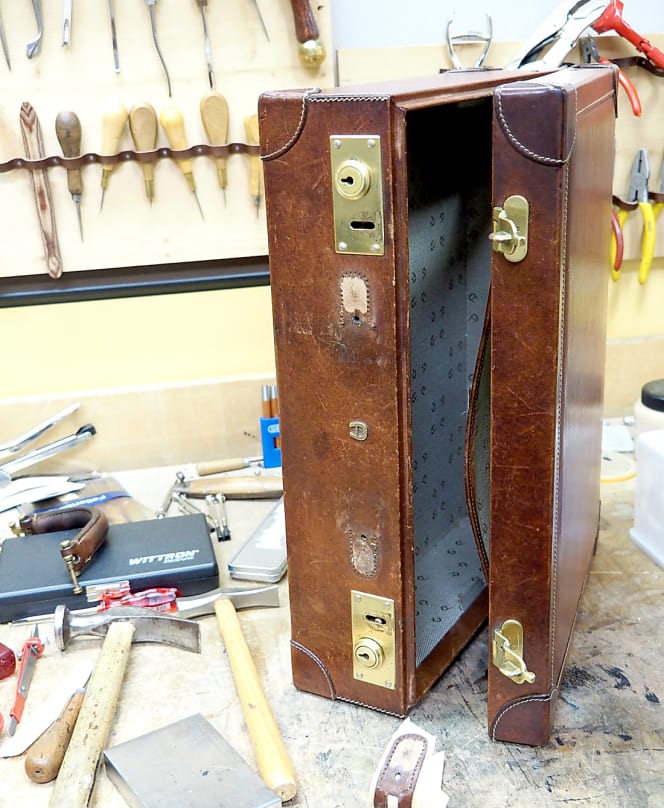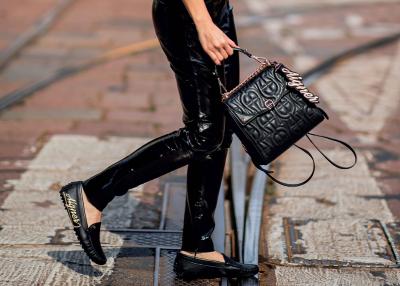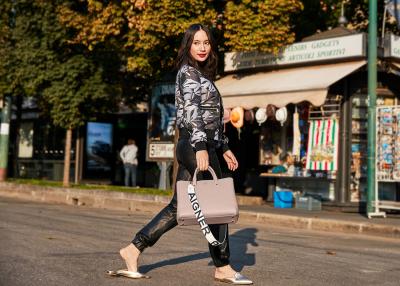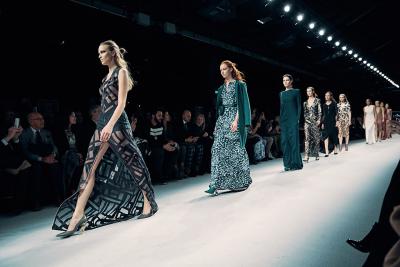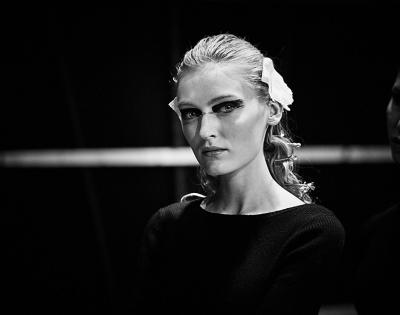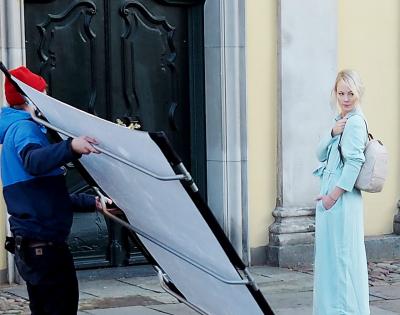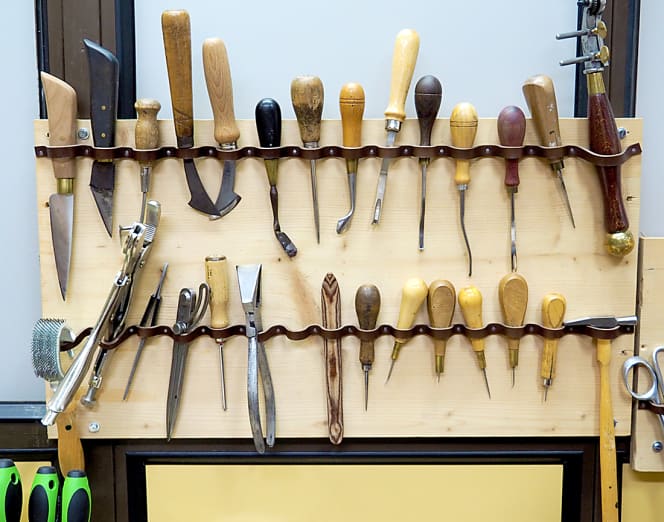
A few weeks ago, I had the unique opportunity to gain an insight into the Modelleria in AIGNER's Headquarter in Munich and to look over the shoulder of master bag maker Mister Haller. Given the quantity of bags the company has the Modelleria produce each season, it goes without saying that the AIGNER bags are not completely handmade. However, I am impressed by the fact that AIGNER tries to personally know every hand involved in the production of the Cybill Bag in Italy. I was equally impressed by my small, unique insight into this traditional craftsmanship with which AIGNER's bags are produced.
Whether it's the mending of an old treasure or a first design by Christian Beck - the Modelleria is the go-to-place for AIGNER's leather products. Today, just as 50 years ago, the luxury brand attaches a lot of importance to manual production, attention to detail and sophisticated designs. AIGNER's leather collections combine the nostalgic charm of an old production process with current standards. This is easy to see, and to feel.
So I had a Cybill Bag and a lot of questions. Mister Haller, ...
How many pieces is a Cybill Bag size M made of?
Approximately 40 pieces; you can't say how many exactly because there are different ways of counting the components.
… Wow! Where does the production start?
Always from the outside to the inside. Concerning the lining of the bag, there are two main ways of manufacturing. Either the lining bag is "hung into" the bag, so that it's only connected to the bag's corpus at the upper rim, or the lining bag is completely sewn into the bag, just as in the Cybill you have there. This way, the stability and therefore the form of the inner bag are increased.
However, before that, foam material is applied to the leather in the front and in the back. That's why the surface of our Cybill Bag feels so soft. The bag is only sewn together at the very end. Also, the production of a bag generally only works in one direction. If something was forgotten, you have to start all over again.
The Cybill Bag's finishing touch is the exclusive refinement of the edges, where a fine layer of color is applied to the edges by hand. No machine is capable of doing this, so it's a special quality feature of this bag.
.. How long does the production of a Cybill Bag take? How much does the production time vary for the different sizes?
In our Modelleria, the duration of the manual production of an individual product is about two days; if it's produced in series by a manufacturer, it takes about five or six hours. However, for our Modelleria, it depends on whether the bag is produced on the basis of an already existing pattern or if the pattern initially has to be developed for a new model.
... What kind of leather is used for the Cybill Bag?
Here, we use printed, chrome tanned and dyed-through cowhide with a slight topcoat finish (roughly pigmented colors).
Where does the leather come from?
From Tuscany in Italy. We prefer short transport routes, and the balanced diet and free-range husbandry of the animals is very important to us. If the blood circulation of the skin is good, e.g. if they stand on a slope and move a lot, the leather for our bags benefits from it.
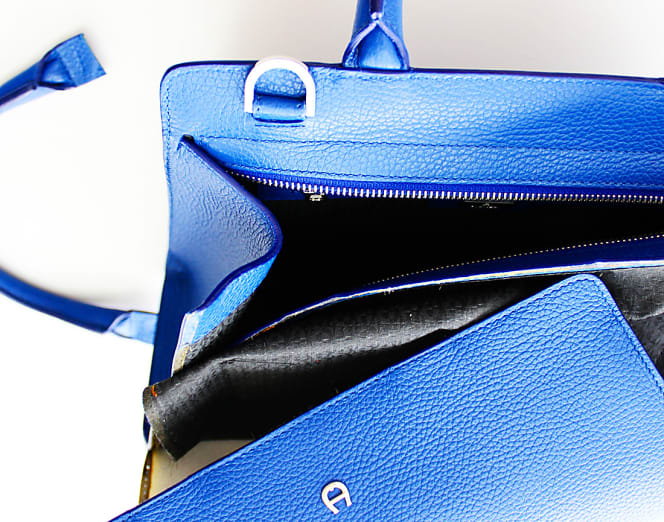
... How do I look after my AIGNER bag correctly so that I can keep it for a long time?
We recommend not wearing our bags with the shoulder strap and an open zipper because this way, the bag's corpus goes out of shape. Furthermore, if you don't use the bag, you should store it in a cloth bag.
If the bag gets wet, we recommend moistening it completely in order to avoid ugly water stains.
Once or twice a year, you should also clean the AIGNER bag with a mild cleaning agent (saddle soap or the like) and then treat it with a high quality product for smooth leather. Please do not use shoe polish, impregnating sprays or similar products! We can also reveal a secret here: AIGNER will soon launch their own leather care.
... How has the production changed compared to before?
Only a few production steps have been simplified by machines. For example, the pieces are now stamped mechanically and not cut by hand. The fibers do not consist of natural fiber anymore, they are made of synthetic fiber and are therefore more abrasion-resistant and colorfast. The edges are available in a greater number of colors and contain latex, so that they look compact and smooth.
Ultimately however, no machine can replace this traditional craftsmanship, which justifies the price of AIGNER's bags.
... Has the production become more sustainable?
Regarding the leather production, yes, it has become more sustainable. Compared to before, there are considerably stricter environmental protection policies (editor's note: with which AIGNER complies according to the guidelines and specified standards and which are regularly controlled by the TÜV Germany, the Technical Inspection Association) concerning the allowed tanning, dyeing and finishing agents. Leather production causes very high water consumption; so there are also considerably stricter regulations concerning sewage water disposal, water treatment etc.
By the way, the craft trade of a bag maker is a teaching profession. So if you love leather and have a talent for instruments, colors and forms, you should talk to Mister Haller at the Modelleria in Munich. At the moment, AIGNER is having two, from September on even three apprentices trained by Mister Haller to be bag makers.
I sincerely thank you, Mister Haller, for letting me look behind the scenes of the Modelleria!
AIGNER has managed to get under my skin even more!
